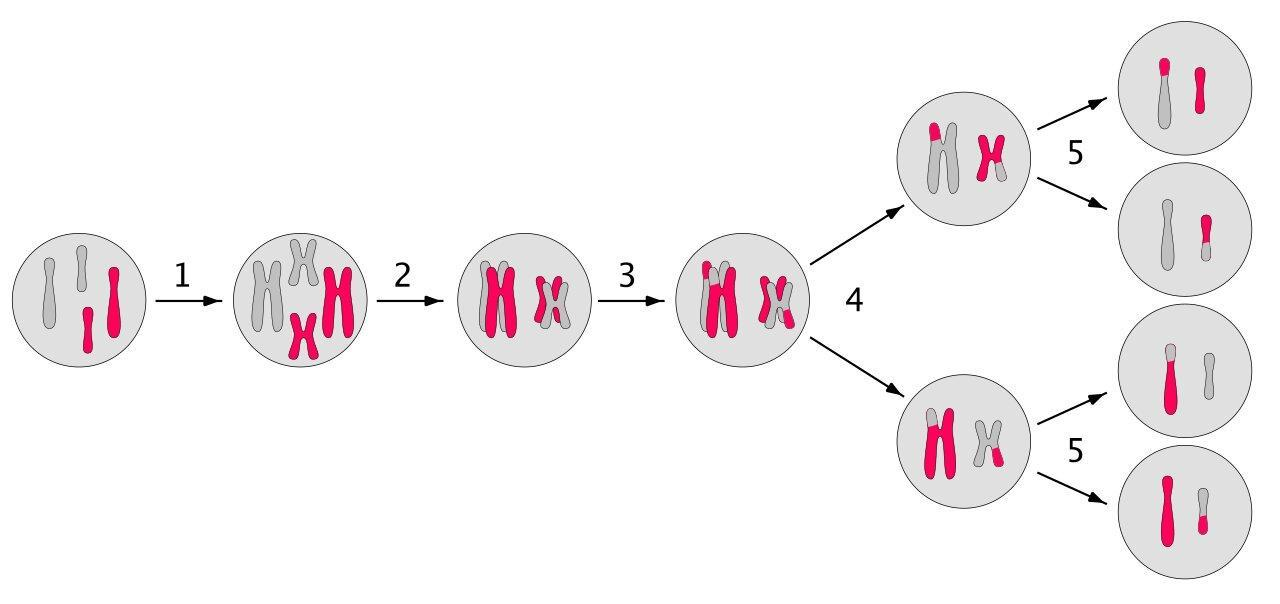Answer
377.4k+ views
Hint: In sexually reproducing species used to generate gametes, such as sperm or egg cells, meiosis is a special form of cell division of germ cells. It requires two division rounds that eventually result in four cells with just one copy of each paternal and maternal chromosome. It requires two division rounds that eventually result in four cells with just one copy of each paternal and maternal chromosome.
Complete answer:
In apical meristem, intercalary meristem and vegetative cells mitosis occurs because tissues and organ development require constant cellular growth.
In reproductive cells, meiosis usually occurs. By undergoing one cycle of DNA replication followed by two divisions, meiosis ends in four haploid daughter cells: homologous chromosomes are divided in the first phase and sister chromatids are separated in the second division. Haploid gametes with one set of 23 chromosomes are formed by Meiosis. The resulting zygote is diploid again when two gametes fuse.
Genetic material of each chromosome's paternal and maternal copies is crossed over, producing new code variations on each chromosome. Later, during fertilisation, the haploid cells from a male and female formed by meiosis can combine to form a cell again with two copies of each chromosome, the zygote.
So, the correct answer is “Option C”.

Note: Meiosis, in eukaryotes, is a central occurrence in the sexual cycle. Meiosis occurs in all single-celled and multicellular sexually reproducing species (which are all eukaryotes), including mammals, plants and fungi. For oogenesis and spermatogenesis, it is an important technique. The most known cause of miscarriage and the most common genetic cause of developmental defects are errors in meiosis that result in aneuploidy (an irregular number of chromosomes).
Complete answer:
In apical meristem, intercalary meristem and vegetative cells mitosis occurs because tissues and organ development require constant cellular growth.
In reproductive cells, meiosis usually occurs. By undergoing one cycle of DNA replication followed by two divisions, meiosis ends in four haploid daughter cells: homologous chromosomes are divided in the first phase and sister chromatids are separated in the second division. Haploid gametes with one set of 23 chromosomes are formed by Meiosis. The resulting zygote is diploid again when two gametes fuse.
Genetic material of each chromosome's paternal and maternal copies is crossed over, producing new code variations on each chromosome. Later, during fertilisation, the haploid cells from a male and female formed by meiosis can combine to form a cell again with two copies of each chromosome, the zygote.
So, the correct answer is “Option C”.

Note: Meiosis, in eukaryotes, is a central occurrence in the sexual cycle. Meiosis occurs in all single-celled and multicellular sexually reproducing species (which are all eukaryotes), including mammals, plants and fungi. For oogenesis and spermatogenesis, it is an important technique. The most known cause of miscarriage and the most common genetic cause of developmental defects are errors in meiosis that result in aneuploidy (an irregular number of chromosomes).
Recently Updated Pages
How do you arrange NH4 + BF3 H2O C2H2 in increasing class 11 chemistry CBSE

Is H mCT and q mCT the same thing If so which is more class 11 chemistry CBSE

What are the possible quantum number for the last outermost class 11 chemistry CBSE

Is C2 paramagnetic or diamagnetic class 11 chemistry CBSE

What happens when entropy reaches maximum class 11 chemistry JEE_Main

Calculate the volume occupied by 88 gram of CO2 at class 11 chemistry CBSE

Trending doubts
Difference between Prokaryotic cell and Eukaryotic class 11 biology CBSE

Fill the blanks with the suitable prepositions 1 The class 9 english CBSE

Write an application to the principal requesting five class 10 english CBSE

Difference Between Plant Cell and Animal Cell

a Tabulate the differences in the characteristics of class 12 chemistry CBSE

Change the following sentences into negative and interrogative class 10 english CBSE

What organs are located on the left side of your body class 11 biology CBSE

Discuss what these phrases mean to you A a yellow wood class 9 english CBSE

List some examples of Rabi and Kharif crops class 8 biology CBSE



